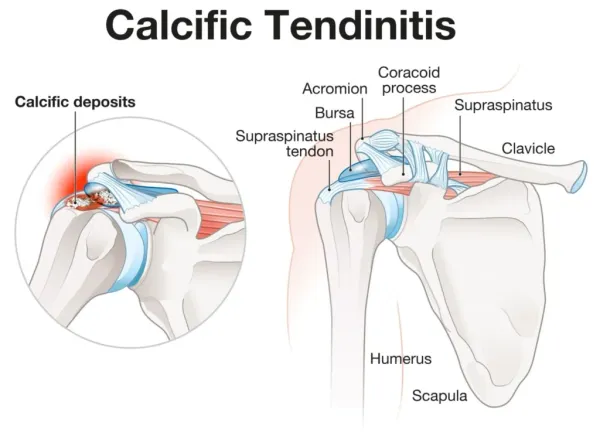ACL Crossbracing - Why do I think we should be excited?
The ACL cross bracing protocol is a novel idea and not intensely studied so why do I think we should be excited about it? Plus... what the heck is it?

I discovered the ACL cross bracing protocol when I was researching my previous blog post on ACL injury management. To me at the time I was quite excited by it - a study that not only had good outcomes, championed more of a self-management approach with input from health professionals but also had a design that meant the outcomes could (theoretically) be easily achieved in the UK.
What do I mean by that? Well for a start they used real patients who came into a clinic and offered them a choice rather than randomising. This initially sounds like a limitation of the study but that's how it would work in real life so I think it's more applicable and gives a shared decision-making approach. They then used a standard hinged and locked knee brace - again nothing fancy and unobtainable.
Did I mention they had good outcomes from the intervention?
So what is it?
The ACL cross bracing protocol was designed by a sports and exercise Physician in Sydney, Australia. The original protocol was designed by Dr Tom Cross but went unpublished (however it was extensively used by Dr Cross at his practice). The study this article is based on takes this approach and studies it in detail from a clinical practice perspective and has Dr Cross as one of the co-authors.
The paper published is from a single sports medicine clinic over there in Aus and used a sample size of 80 patients. The patients had a fixed flexion knee brace fitted as soon as possible after MRI confirmation of ACL injury and were fixed at 90 degrees flexion for the first 4 weeks. The brace was then adjusted at regular increments (weekly to 2 weekly) to increase the range of movement available. It was then removed after 12 weeks.
The idea with it is that at 90 degrees flexion there is the least distance between the origin and attachment of the ACL and therefore this allows for the best chance of 'natural' healing and then you progress slowly back to full range of movement from there.

Outcomes and Comparison to the KENON Trial
The outcomes from the cross bracing protocol trial were that 90% of participants who presented with a complete tear of their ACL at baseline had ACL continuity on their 3-month follow-up MRI.
Just let that sink in... 90% have gone from a completely torn (discontinuous) ACL to one that has now got a fully continuous structure in 3 months. That's pretty darn impressive!
The KENON trial is a large multi-centre randomised controlled trial of ACL management. The two treatment arms were Early ACL reconstruction with rehab or rehab with optional delayed ACL reconstruction. They ultimately found no statistically significant difference in outcomes between the two groups and only 51% in the optional delayed reconstruction group actually went on to have the surgery. So a much higher number went on to have surgery compared to the cross bracing protocol (2.5% in cross bracing), but then again they were having rehab alone with no bracing
Advantages and Disadvantages

So a quick summary here of the main points for and against this that I can see currently
Advantages
- Cheap - bracing with follow-ups is a lot more cost-effective than surgery
- Patients tolerate it well - good patient feedback on it in a recent paper and apart from initially getting used to the restriction even during the trial it was tolerated well
- Good outcomes - 90% showing signs of healing at 3-month follow-up
- No disadvantage if doesn't 'work' - KENON trial shows us no statistical difference between early and delayed ACL reconstruction
Disadvantages
- UK guidelines - doesn't currently fit with the UK ACL management guidelines, however these are due an update
- Intense protocol - the follow-up protocol Link Here would be very difficult to implement in UK NHS practice and would need some modification
- Single study - only a single study so far shows us this protocol and it's a single-centre trial with no randomisation. Yes I've said my reasons above for this approach being more applicable to practice but we need further research
Where I think we are currently
I think the evidence is overwhelmingly positive that we can try things like the cross bracing protocol and there is no detriment to the patient if it doesn't work as the KENON trial shows that delayed reconstruction had statistically the same effect as early reconstruction. I think it also allows us to have those conversations with patients that they don't need to rush to make a decision.
So should we be excited? All in all yes, I caveat this with the fact that a lot of further research is required and this is an ever-evolving topic at the moment, but it is exciting non the less.

Why? Well anything that promotes and offers patients more choice is always a good thing and given potential surgical complications from the nerve block/anaesthetic alone then having a decent non-surgical option that might even give better outcomes than surgery (pending future research) seems like its good for the world to me at least!
Patient Perspective
Just a last word on patient perspectives of this. There is a really interesting article/blog from a lecturer and researcher in Australia who underwent the cross bracing protocol.
I would highly recommend reading the whole article here but the highlights are that even though it was a lot of getting used to and he faced some challenges he returned to sport and hasn't had to avoid any activities since. He is very supportive of the protocol and the healing potential of the ACL.
Yup one person, but it does highlight the challenges faced by patients using the protocol which I think is always invaluable insight
Reference List
-
Filbay, Stephanie R, Dowsett, M., Chaker Jomaa, M., Rooney, J., Sabharwal, R., Lucas, P., Van Den Heever, A., Kazaglis, J., Merlino, J., Moran, M., Allwright, M., Kuah, D.E.K., Durie, R., Roger, G., Cross, M., Cross, T., 2023. Healing of acute anterior cruciate ligament rupture on MRI and outcomes following non-surgical management with the Cross Bracing Protocol. Br J Sports Med 57, 1490–1497. https://doi.org/10.1136/bjsports-2023-106931
-
Filbay, Stephanie Rose, Roemer, F.W., Lohmander, L.S., Turkiewicz, A., Roos, E.M., Frobell, R., Englund, M., 2023. Evidence of ACL healing on MRI following ACL rupture treated with rehabilitation alone may be associated with better patient-reported outcomes: a secondary analysis from the KANON trial. Br J Sports Med 57, 91–99. https://doi.org/10.1136/bjsports-2022-105473
-
Filbay, S.R., Roos, E.M., Frobell, R.B., Roemer, F., Ranstam, J., Lohmander, L.S., 2017. Delaying ACL reconstruction and treating with exercise therapy alone may alter prognostic factors for 5-year outcome: an exploratory analysis of the KANON trial. Br J Sports Med 51, 1622–1629. https://doi.org/10.1136/bjsports-2016-097124
-
Frobell, R.B., Roos, H.P., Roos, E.M., Roemer, F.W., Ranstam, J., Lohmander, L.S., 2013. Treatment for acute anterior cruciate ligament tear: five year outcome of randomised trial. BMJ 346, f232–f232. https://doi.org/10.1136/bmj.f232
-
Jadidi, S., Lee, A.D., Pierko, E.J., Choi, H., Jones, N.S., 2023. Non-operative Management of Acute Knee Injuries. Curr Rev Musculoskelet Med. https://doi.org/10.1007/s12178-023-09875-7
-
Steven Duhig, n.d. A Patient’s Story: The Cross Bracing Protocol, the ACL’s Healing Potential, and The Good Word of Merv [WWW Document]. A Patient’s Story: The Cross Bracing Protocol, the ACL’s Healing Potential, and The Good Word of Merv. URL https://www.jospt.org/doi/10.2519/jospt.blog.20230705 (accessed 2.22.24).




